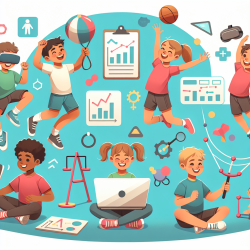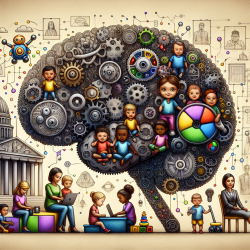Introduction
In the realm of child development, the interplay between a child's self-perceived and actual motor competence is crucial. The study titled "Children’s Self-Perceived and Actual Motor Competence in Relation to Their Peers" provides valuable insights into this dynamic, highlighting the significance of motor competence in children's physical activity levels. This blog aims to guide practitioners in leveraging these findings to enhance their professional practice and encourage further research.
Understanding the Research
The study involved 1031 children aged 8 to 12 years, assessing their actual motor competence using the Canadian Agility and Movement Skill Assessment (CAMSA) and their perceived competence through a questionnaire. Results indicated that children's ability to accurately perceive their motor competence improved with age, yet more than half of the participants still struggled with accurate self-assessment.
Key Findings
- Children in grades 3 and 4 often overestimated their motor abilities, while those in grades 5 and 6 showed more accurate self-assessment.
- Over half of the children could not accurately perceive their motor competence, potentially impacting their participation in physical activities.
- As children aged, they were more likely to underestimate their abilities, which could discourage physical activity participation.
Implications for Practitioners
Practitioners working with children can use these findings to foster environments that support accurate self-assessment of motor skills. Here are some strategies:
- Encourage Self-Reflection: Facilitate activities that allow children to reflect on their motor skills without peer comparison.
- Provide Constructive Feedback: Offer feedback that focuses on effort and improvement rather than comparison to peers.
- Promote Inclusive Activities: Design activities that cater to various skill levels, ensuring all children feel competent and motivated to participate.
Encouraging Further Research
While this study provides significant insights, further research is necessary to explore interventions that can help children develop accurate self-perceptions of their motor competence. Practitioners are encouraged to engage in or support research initiatives that aim to bridge the gap between perceived and actual motor skills.
Conclusion
Understanding and addressing the discrepancies between children's perceived and actual motor competence is vital for promoting physical activity and overall well-being. By implementing the strategies outlined above, practitioners can create supportive environments that encourage accurate self-assessment and foster lifelong physical activity habits.
To read the original research paper, please follow this link: Children’s Self-Perceived and Actual Motor Competence in Relation to Their Peers.










